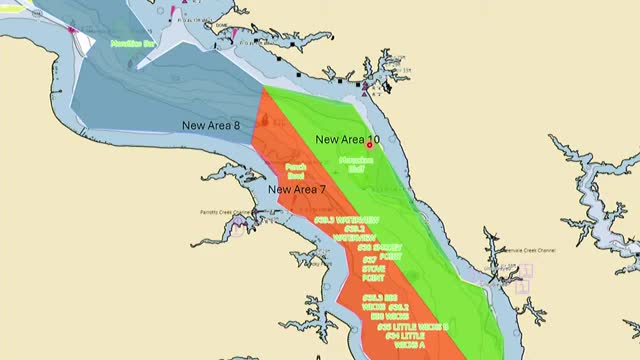Local Officials Propose Two-Year Oyster Replenishment Rotation for Manaskey Bluff
July 23, 2025 | Marine Resources Commission, Executive Agencies, Executive, Virginia
This article was created by AI summarizing key points discussed. AI makes mistakes, so for full details and context, please refer to the video of the full meeting. Please report any errors so we can fix them. Report an error »

During the recent Virginia Marine Resources Commission meeting held on July 23, 2025, significant discussions centered around the management and replenishment of oyster habitats in the region. The meeting highlighted the importance of establishing a more effective rotation system for oyster planting, which is crucial for both the sustainability of the oyster population and the livelihoods of local watermen.
One of the key proposals discussed was the implementation of a two-year rotation for oyster planting, as opposed to the current practice of a 30-day rotation. Several members expressed their support for this change, arguing that a longer rotation would allow for better growth and quality of oysters, ultimately benefiting the local fishing community. The idea is to focus efforts on specific areas each year, rather than spreading resources thinly across a wide region, which can lead to inefficiencies and increased operational challenges for watermen.
The conversation also touched on the historical context of oyster replenishment in the area, with references to past efforts and the need to assess the effectiveness of these programs. Participants emphasized the importance of maintaining established lines for oyster planting, particularly between designated areas, to ensure that watermen can effectively harvest without disrupting the ecosystem.
In addition to the primary focus on oyster management, the meeting included discussions about potential adjustments to the boundaries of planting areas, with suggestions to revert to previous lines that had proven effective in the past. This approach aims to enhance the productivity of the oyster beds while also considering the operational needs of local fishermen.
As the Virginia Marine Resources Commission continues to refine its strategies for oyster replenishment, the outcomes of this meeting are expected to have a direct impact on the local fishing community, promoting sustainable practices that support both the environment and the economy. The commission plans to further evaluate these proposals and engage with stakeholders to ensure that the needs of the community are met in future management decisions.
One of the key proposals discussed was the implementation of a two-year rotation for oyster planting, as opposed to the current practice of a 30-day rotation. Several members expressed their support for this change, arguing that a longer rotation would allow for better growth and quality of oysters, ultimately benefiting the local fishing community. The idea is to focus efforts on specific areas each year, rather than spreading resources thinly across a wide region, which can lead to inefficiencies and increased operational challenges for watermen.
The conversation also touched on the historical context of oyster replenishment in the area, with references to past efforts and the need to assess the effectiveness of these programs. Participants emphasized the importance of maintaining established lines for oyster planting, particularly between designated areas, to ensure that watermen can effectively harvest without disrupting the ecosystem.
In addition to the primary focus on oyster management, the meeting included discussions about potential adjustments to the boundaries of planting areas, with suggestions to revert to previous lines that had proven effective in the past. This approach aims to enhance the productivity of the oyster beds while also considering the operational needs of local fishermen.
As the Virginia Marine Resources Commission continues to refine its strategies for oyster replenishment, the outcomes of this meeting are expected to have a direct impact on the local fishing community, promoting sustainable practices that support both the environment and the economy. The commission plans to further evaluate these proposals and engage with stakeholders to ensure that the needs of the community are met in future management decisions.
View full meeting
This article is based on a recent meeting—watch the full video and explore the complete transcript for deeper insights into the discussion.
View full meeting
